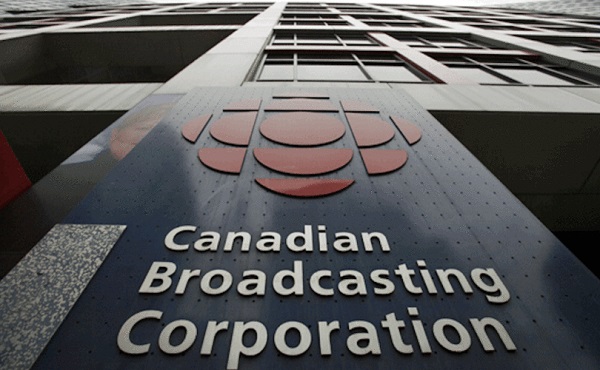Alberta
Insurance rate increases absolutely unacceptable: NDP Critic for Service Alberta

This post was submitted by Jon Carson, NDP MLA for Edmonton-West Henday, Opposition Critic for Service Alberta
Thirty per cent.
That’s how much auto insurance rates skyrocketed by for some Albertans at the end of this year, after Premier Jason Kenney and the UCP removed the five per cent cap on rate increases that our NDP government brought in, taking a “no limit” approach to how much insurance companies could actually raise rates.
The jump was immediate.
Albertans saw a wave of premium increases bordering on price gouging. Over 90% of car insurance companies filed for rate increases as soon as the cap was lifted, and rushed to bill drivers as soon as they could. Of the companies that received approved rate changes, the increases ranged from 4.9 per cent to an eye-popping 29.8 per cent.
It was a nice gift from Jason Kenney, who already slammed families for hundreds of dollars of new costs in his fall budget, including hikes to income tax, property tax, as well as more in school fees, prescription drugs and college tuition.
As usual, Finance Minister Travis Toews trotted out the UCP’s one-trick pony and blamed the NDP, claiming that insurance companies were set to pack their bags and flee the province if he didn’t let them jack up premiums beyond five per cent.
The lobbying effort came out in full force. The brokers, the insurance companies, and the Insurance Bureau of Canada are working overtime to sell quite the sob story: a massive spike in claims costs, not enough options for drivers, etc, etc. It’s tough times for the poor, little ol’ car insurance company.
What a load. These are some of the biggest and most profitable companies in Canada, and they simply want back the power they had to jack up premiums hand over fist.
The truth is that claims costs over the past few years are level, a fact that’s supported by the Insurance Bureau of Canada‘s own data. In fact, an actuarial analysis by Fair Alberta Injury Regulators, an organization made up of concerned Albertans, doctors and legal experts, found that injury payouts have stabilized in the last few years, and even started to dip in 2019. Their actuary specifically found evidence that claims are “not skyrocketing.”
This is further supported by the Alberta Superintendent of Insurance, responsible for all regulatory oversight of insurers operating in Alberta with a specific duty to ensure that insurance companies treat Albertans fairly. In his annual report for 2018, he found on average that the claims ratio for car insurance was 80 per cent across all companies in Alberta. Not the 120 per cent figure the insurance companies trot out on TV.
And while the UCP Government continues to claim they have documents to prove the cap made the car insurance industry unsustainable, they haven’t provided a single piece of paper showing any of these companies would bail if they could–GASP–only raise premiums five per cent every year.
So why remove the cap? Well, in politics, it’s who you know. And Jason Kenney knows an awful lot of people in the insurance industry. Namely, his former chief of staff and campaign director Nick Koolsbergen, who was hired to lobby the Premier on behalf of the car insurance industry just last year. He has Kenney’s cell phone number.
Sounds like a good guy to have on your side… if you’re a car insurance company.
The fact is, these companies turn a profit of tens of millions of dollars each year. They’re used to having carte blanche in Alberta, and they want it back.
Under the thinly-veiled guise of “red tape reduction”, the UCP has struck a panel looking at more regulatory changes that the insurance lobby itself has said “could also change the rate regulation framework that governs how insurers set premiums.”
If costs are going to go up even more, who will Jason Kenney look out for? His friends and interests in big insurance? Or everyday Albertans driving to work?
Knowing Jason Kenney, Albertans should brace for impact.
Jon Carson is the MLA for Edmonton-West Henday and the Alberta NDP Opposition Critic for Service Alberta.
Alberta
Alberta’s fiscal update projects budget surplus, but fiscal fortunes could quickly turn

From the Fraser Institute
By Tegan Hill
According to the recent mid-year update tabled Thursday, the Smith government projects a $4.6 billion surplus in 2024/25, up from the $2.9 billion surplus projected just a few months ago. Despite the good news, Premier Smith must reduce spending to avoid budget deficits.
The fiscal update projects resource revenue of $20.3 billion in 2024/25. Today’s relatively high—but very volatile—resource revenue (including oil and gas royalties) is helping finance today’s spending and maintain a balanced budget. But it will not last forever.
For perspective, in just the last decade the Alberta government’s annual resource revenue has been as low as $2.8 billion (2015/16) and as high as $25.2 billion (2022/23).
And while the resource revenue rollercoaster is currently in Alberta’s favor, Finance Minister Nate Horner acknowledges that “risks are on the rise” as oil prices have dropped considerably and forecasters are projecting downward pressure on prices—all of which impacts resource revenue.
In fact, the government’s own estimates show a $1 change in oil prices results in an estimated $630 million revenue swing. So while the Smith government plans to maintain a surplus in 2024/25, a small change in oil prices could quickly plunge Alberta back into deficit. Premier Smith has warned that her government may fall into a budget deficit this fiscal year.
This should come as no surprise. Alberta’s been on the resource revenue rollercoaster for decades. Successive governments have increased spending during the good times of high resource revenue, but failed to rein in spending when resource revenues fell.
Previous research has shown that, in Alberta, a $1 increase in resource revenue is associated with an estimated 56-cent increase in program spending the following fiscal year (on a per-person, inflation-adjusted basis). However, a decline in resource revenue is not similarly associated with a reduction in program spending. This pattern has led to historically high levels of government spending—and budget deficits—even in more recent years.
Consider this: If this fiscal year the Smith government received an average level of resource revenue (based on levels over the last 10 years), it would receive approximately $13,000 per Albertan. Yet the government plans to spend nearly $15,000 per Albertan this fiscal year (after adjusting for inflation). That’s a huge gap of roughly $2,000—and it means the government is continuing to take big risks with the provincial budget.
Of course, if the government falls back into deficit there are implications for everyday Albertans.
When the government runs a deficit, it accumulates debt, which Albertans must pay to service. In 2024/25, the government’s debt interest payments will cost each Albertan nearly $650. That’s largely because, despite running surpluses over the last few years, Albertans are still paying for debt accumulated during the most recent string of deficits from 2008/09 to 2020/21 (excluding 2014/15), which only ended when the government enjoyed an unexpected windfall in resource revenue in 2021/22.
According to Thursday’s mid-year fiscal update, Alberta’s finances continue to be at risk. To avoid deficits, the Smith government should meaningfully reduce spending so that it’s aligned with more reliable, stable levels of revenue.
Author:
Alberta
Premier Smith says Auto Insurance reforms may still result in a publicly owned system

Better, faster, more affordable auto insurance
Alberta’s government is introducing a new auto insurance system that will provide better and faster services to Albertans while reducing auto insurance premiums.
After hearing from more than 16,000 Albertans through an online survey about their priorities for auto insurance policies, Alberta’s government is introducing a new privately delivered, care-focused auto insurance system.
Right now, insurance in the province is not affordable or care focused. Despite high premiums, Albertans injured in collisions do not get the timely medical care and income support they need in a system that is complex to navigate. When fully implemented, Alberta’s new auto insurance system will deliver better and faster care for those involved in collisions, and Albertans will see cost savings up to $400 per year.
“Albertans have been clear they need an auto insurance system that provides better, faster care and is more affordable. When it’s implemented, our new privately delivered, care-centred insurance system will put the focus on Albertans’ recovery, providing more effective support and will deliver lower rates.”
“High auto insurance rates put strain on Albertans. By shifting to a system that offers improved benefits and support, we are providing better and faster care to Albertans, with lower costs.”
Albertans who suffer injuries due to a collision currently wait months for a simple claim to be resolved and can wait years for claims related to more serious and life-changing injuries to addressed. Additionally, the medical and financial benefits they receive often expire before they’re fully recovered.
Under the new system, Albertans who suffer catastrophic injuries will receive treatment and care for the rest of their lives. Those who sustain serious injuries will receive treatment until they are fully recovered. These changes mirror and build upon the Saskatchewan insurance model, where at-fault drivers can be sued for pain and suffering damages if they are convicted of a criminal offence, such as impaired driving or dangerous driving, or conviction of certain offenses under the Traffic Safety Act.
Work on this new auto insurance system will require legislation in the spring of 2025. In order to reconfigure auto insurance policies for 3.4 million Albertans, auto insurance companies need time to create and implement the new system. Alberta’s government expects the new system to be fully implemented by January 2027.
In the interim, starting in January 2025, the good driver rate cap will be adjusted to a 7.5% increase due to high legal costs, increasing vehicle damage repair costs and natural disaster costs. This protects good drivers from significant rate increases while ensuring that auto insurance providers remain financially viable in Alberta.
Albertans have been clear that they still want premiums to be based on risk. Bad drivers will continue to pay higher premiums than good drivers.
By providing significantly enhanced medical, rehabilitation and income support benefits, this system supports Albertans injured in collisions while reducing the impact of litigation costs on the amount that Albertans pay for their insurance.
“Keeping more money in Albertans’ pockets is one of the best ways to address the rising cost of living. This shift to a care-first automobile insurance system will do just that by helping lower premiums for people across the province.”
Quick facts
- Alberta’s government commissioned two auto insurance reports, which showed that legal fees and litigation costs tied to the province’s current system significantly increase premiums.
- A 2023 report by MNP shows
-

 ESG2 days ago
ESG2 days agoCan’t afford Rent? Groceries for your kids? Trudeau says suck it up and pay the tax!
-

 John Stossel2 days ago
John Stossel2 days agoGreen Energy Needs Minerals, Yet America Blocks New Mines
-

 Daily Caller2 days ago
Daily Caller2 days agoLos Angeles Passes ‘Sanctuary City’ Ordinance In Wake Of Trump’s Deportation Plan
-

 Alberta2 days ago
Alberta2 days agoProvince considering new Red Deer River reservoir east of Red Deer
-

 Addictions2 days ago
Addictions2 days agoBC Addictions Expert Questions Ties Between Safer Supply Advocates and For-Profit Companies
-

 Aristotle Foundation2 days ago
Aristotle Foundation2 days agoToronto cancels history, again: The irony and injustice of renaming Yonge-Dundas Square to Sankofa Square
-

 armed forces1 day ago
armed forces1 day agoJudge dismisses Canadian military personnel’s lawsuit against COVID shot mandate
-

 Business19 hours ago
Business19 hours agoCBC’s business model is trapped in a very dark place






